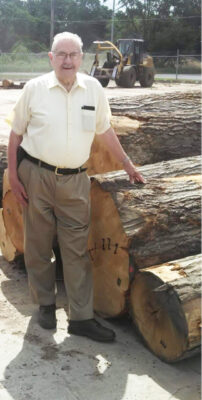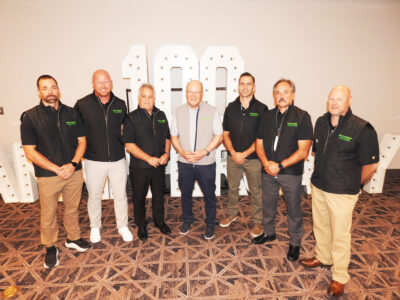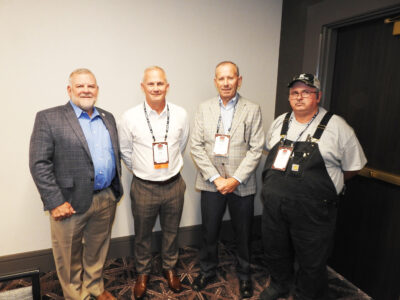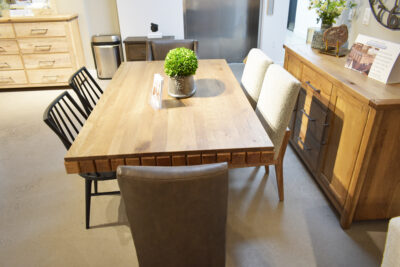Quebec Business Trends – April 2025
Quebec’s Hardwood Market Proves To Be Steady, Government Funds Housing Starts
The winter snowstorms that hit Ontario and Quebec at press time caused delays in logging, thus reducing supplies on markets. With improved weather conditions, logging operations were able to go in the woods for some much-needed supplies of various species for sawmills and on to end-users.
Ash sales have declined due to scarce supplies rather than a reduced demand for this species. In the Appalachian region, loss of trees to the Emerald Ash Borer is the cause of declining production and exports.
The regionally important Hard Maple continues to lead on markets with volumes going to cabinet manufacturers although it was reported that production figures had dropped. As many cabinet manufacturers prefer winter cut material, supplies are a little thin. Kiln-dried sales are largely positive, although some companies would prefer to have more common grade business.
Soft Maple green FAS1F and kiln-dried FAS Soft Maple are moving well in most thicknesses. Demand for No. 1 Common has improved. Sap and Better material is noted as selling the best in all grades, followed by unselected stocks with good color.
Basswood sales continue to contract due to the cabinet, window blind, shutter, moulding and millwork manufacturing sectors’ reduced business. Therefore, loggers and sawmillers are avoiding this specie whenever possible. As a result, supply and demand for most items are closely aligned, although at low levels.
Cherry demand is also weaker from cabinet and furniture manufacturers. Wholesalers and exporters have also purchased less Cherry since the beginning of the year, as most have sufficient quantities on hand.
Contacts comment that while Hickory is a slow seller, conditions have improved slightly since earlier this year. Some flooring plants have increased their green purchases.
Residential wood flooring manufacturers were purchasing more White Oak, but less Red Oak. As sawmill production was low in the Appalachian region, prices for No. 2A and 3A Red Oak edged up despite slow demand.
Sawmill operators’ output of Red Oak is decent, although business varies by grade. Sales of No. 1 Common and Better are brisk. Supply and demand for Nos. 2A and 3A are closely balanced, due to less lumber entering the market. Exports of kiln-dried No. 1 Common and Better Red Oak are gaining momentum to several markets, including the Middle East, Canada and the U.S., as more logs are being sold to sawmills instead of stave plants, and to overseas markets such as the U.K. and Vietnam.
Poplar is moving well and sawmills are seeking more logs, however, supplies are constrained due to some limited logging activity and solid demand from other markets, particularly from plywood plants.
According to some contacts certain sawmills stopped processing Walnut as logs are going for export. Those that produce green Walnut are obtaining higher prices. Kiln-dried Walnut business is mixed, and so are the prices, according to comments from contacts.
Affordable Housing Construction Commences
The governments of Canada and Quebec are building affordable housing starts across Quebec, with 205 units to be built quickly in Quebec by Eximm – Complexe de Ville Inc. The building named Le Philippe Phase 2, will provide a home for low- and moderate-income households. The announcement was made in early February in Quebec by the Honorable Jean-Yves Duclos, Minister of Public Services and Procurement, Quebec Lieutenant and Member of Parliament for Quebec, France-Élaine Duranceau, Quebec Minister Responsible for Housing, Bruno Marchand, Mayor of Québec and Jean Morency, President and CEO of Eximm.
The government of Quebec is contributing nearly $30 million to the project. This funding comes from the $992 million in federal funding provided to Quebec through the Canada-Quebec Agreement under the Housing Accelerator Fund (HAF) and from equivalent new investments announced by Quebec in its 2023 and 2024 economic updates.
This financial assistance covers around 43 percent of the estimated cost of building the units, whose affordability will be guaranteed for a minimum of 35 years. The city of Quebec is adding around $12 million. The financial package for this project is supplemented by a down payment from the developer and a mortgage.
With regards to the delayed 30 day tariff imposition, an array of business leaders across Quebec described export diversification as “easier said than done” and are voicing concerns about its viability as a short-term strategy for countering U.S. economic pressure. Julie St-Arnaud, president of furniture company Huppé, says that Canadian exports are less competitive in overseas markets (such as Europe) due to the greater cost of shipping. In the meantime, the Gouvernement du Québec is looking for ways to diversify the province’s economy, which has historically relied on American markets.







